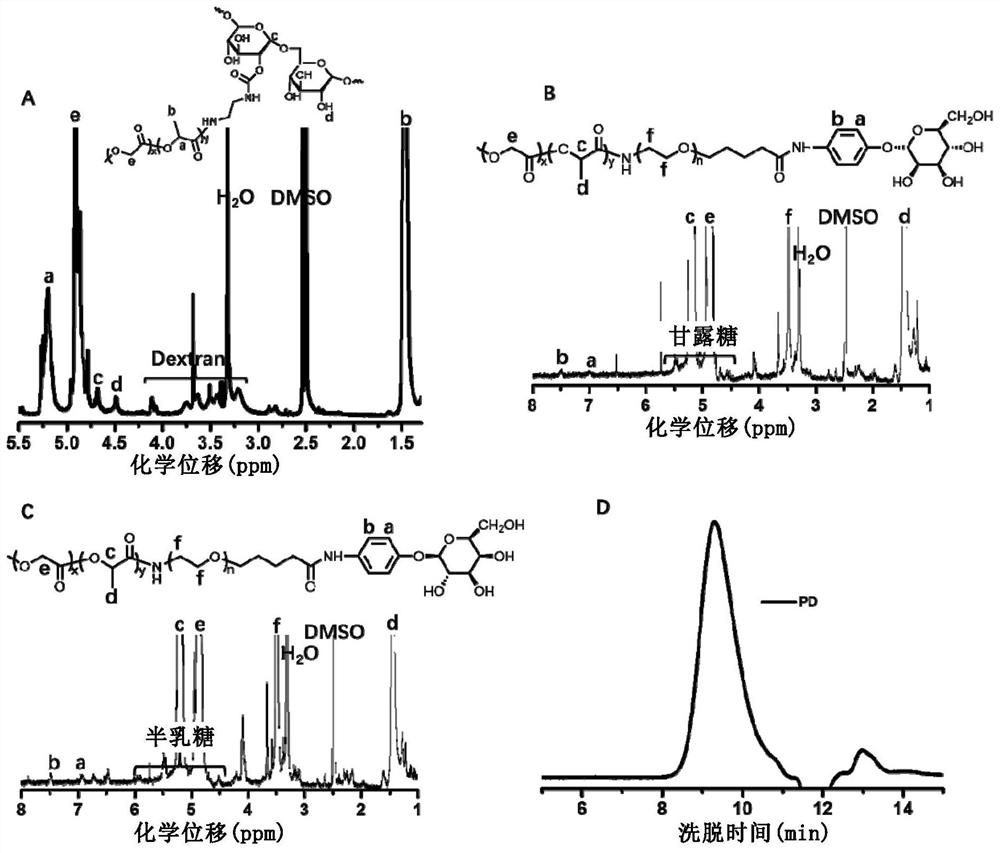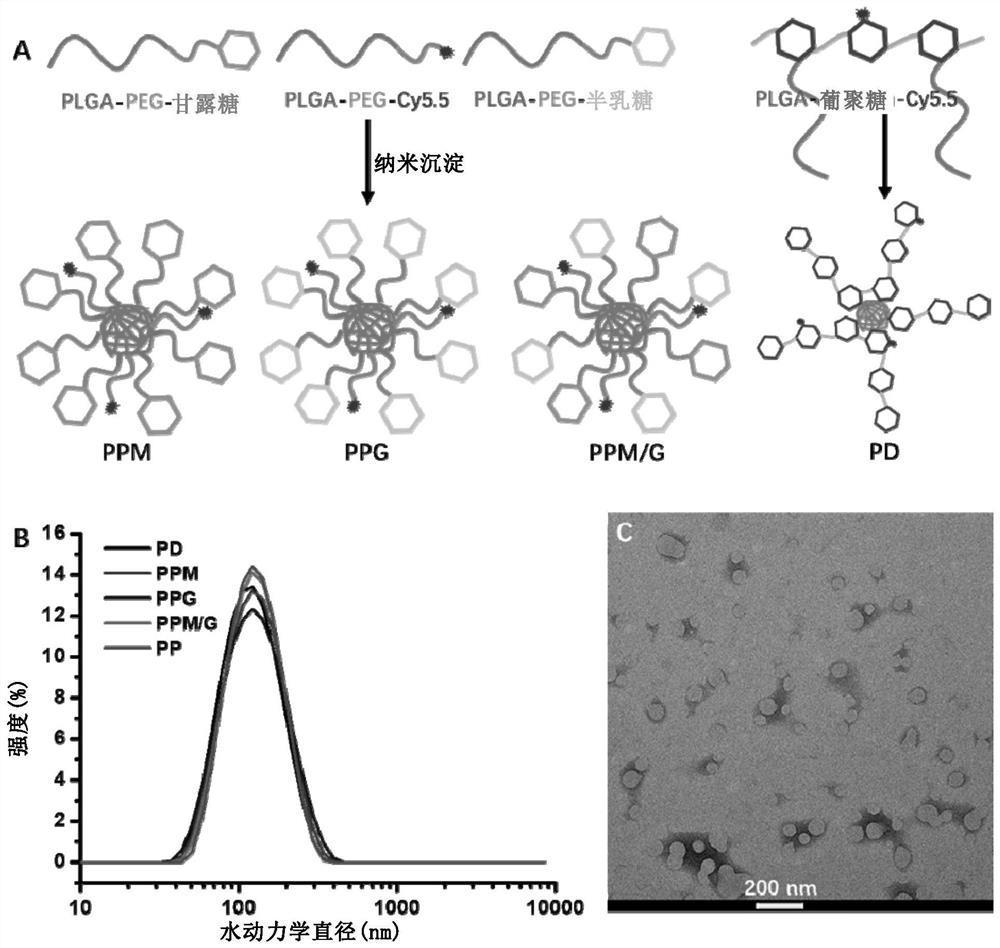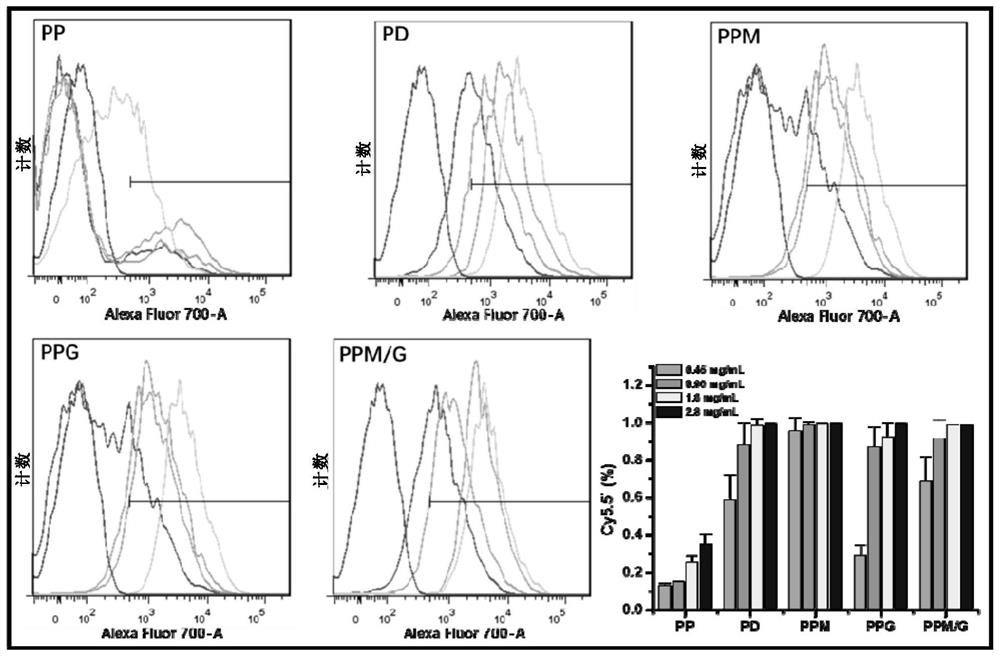Components of macrophage targeting carrier system, preparation method of macrophage targeting carrier system and application of macrophage targeting carrier system to medicines and nucleic acid delivery
A technology for targeting macrophages and drugs, which is applied in the field of components of macrophage targeting carrier systems, and can solve the problems of high cytotoxicity, ineffective macrophages, and low gene transfection efficiency.
- Summary
- Abstract
- Description
- Claims
- Application Information
AI Technical Summary
Problems solved by technology
Method used
Image
Examples
preparation example Construction
[0162] The preparation method of the nanoparticle of the present invention mainly includes steps: (1) preparation of the nanoparticle unit in the compound and (2) mixing of the nanoparticle unit to obtain the nanoparticle of the present invention.
[0163] Wherein, the preparation method of the nanoparticle unit can be prepared by methods well known to those skilled in the art.
[0164] Preferably, in step (2), mixing is performed in the presence of a stabilizer. Wherein, the stabilizer is selected from the group consisting of polyvinyl alcohol, polyglycerin fatty acid ester, Tween 80, Tween 20, Span80, Span60, sodium dodecylsulfonate, or a combination thereof. Preferably, the stabilizer is used at a concentration of 0.1wt%-10wt%.
[0165] In another preferred example, the method further includes step (iii): separating the nanoparticles, including removing the stabilizer.
[0166] In a preferred embodiment, the nanoparticle units can be compounded by a precipitation method t...
Embodiment 1
[0248] Example 1: Synthesis and Characterization of Carbohydrate-Conjugated PLGA or PLGA-PEG Polymers
[0249] Such as figure 1 As shown in A, we use PD's 1 Peak c (4.49ppm, dextran terminal proton) and peak a (5.21ppm, -OCH(CH) in the H NMR spectrum 3 )CONH-) to assess the number of PLGA chains in each dextran. The number of PLGA chains grafted to dextran can be controlled by adjusting the feed molar ratio (γ), when PLGA / D-70-NH 2 When the γ was 18.4, the average number of PLGA chains grafted per dextran was 20. The GPC trace of PD showed no residual unreacted PLGA, and the polymer had a low polydispersity (ηfigure 1 D). PPM and PPG polymers were synthesized in a similar manner, sequentially undergoing acylation, amine deprotection, and acylation reactions (Scheme 2&3). The first step, by calculating the phenyl protons (7.5, 7.0ppm) and tert-butyl protons (1.37ppm, -C(CH 3 ) 3 ), the reaction rate of grafting mannose or galactose to PEG was 100% (Fig. S4&S5). In the s...
Embodiment 2
[0250] Embodiment 2: Preparation and characterization of NPs
[0251] Using carbohydrate-modified polymers, we designed and prepared a series of NPs by nanoprecipitation method ( figure 2 A). Briefly, the polymer was dissolved in an organic solvent and added dropwise to deionized water. Two kinds of NPs were formulated, including NPs of the same composition (i.e., PPM, PPG, and PD) and PPM / G NPs composed of a mixture of PPM and PPG at a weight ratio of 1:1. In addition, during the formulation process, Cy5.5-labeled PLGA-PEG (PP-Cy5.5) was incorporated into NPs for subsequent flow cytometry detection of phagocytosis of NPs by macrophages. The average hydrodynamic size of the resulting NPs was measured using dynamic light scattering (DLS). We found that the particle size depends on the type of organic solvent used and the polymer concentration. The particle size was larger when NPs were formulated with acetone compared to DMSO, and increased polymer concentration also resul...
PUM
| Property | Measurement | Unit |
|---|---|---|
| size | aaaaa | aaaaa |
| polydispersity index | aaaaa | aaaaa |
Abstract
Description
Claims
Application Information
 Login to View More
Login to View More - Generate Ideas
- Intellectual Property
- Life Sciences
- Materials
- Tech Scout
- Unparalleled Data Quality
- Higher Quality Content
- 60% Fewer Hallucinations
Browse by: Latest US Patents, China's latest patents, Technical Efficacy Thesaurus, Application Domain, Technology Topic, Popular Technical Reports.
© 2025 PatSnap. All rights reserved.Legal|Privacy policy|Modern Slavery Act Transparency Statement|Sitemap|About US| Contact US: help@patsnap.com



